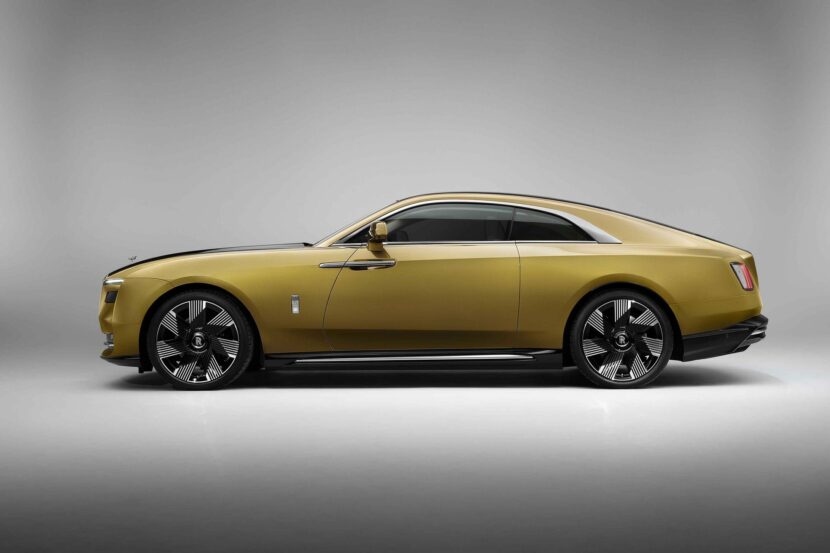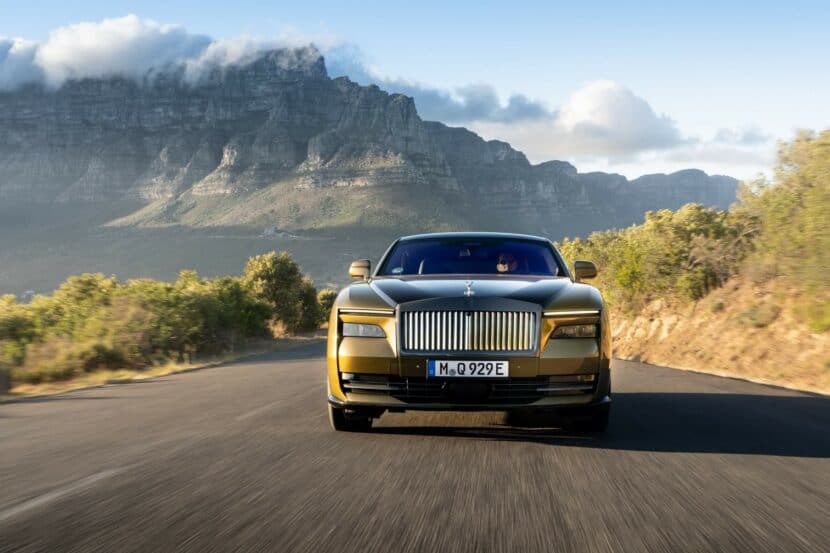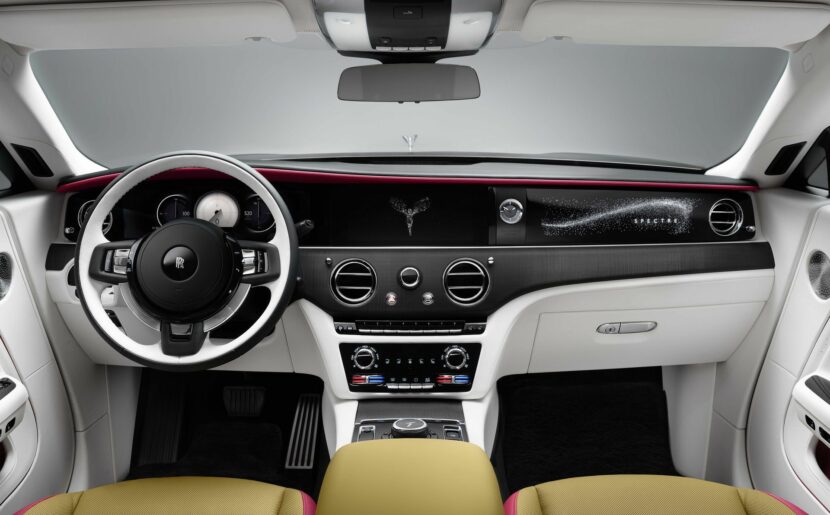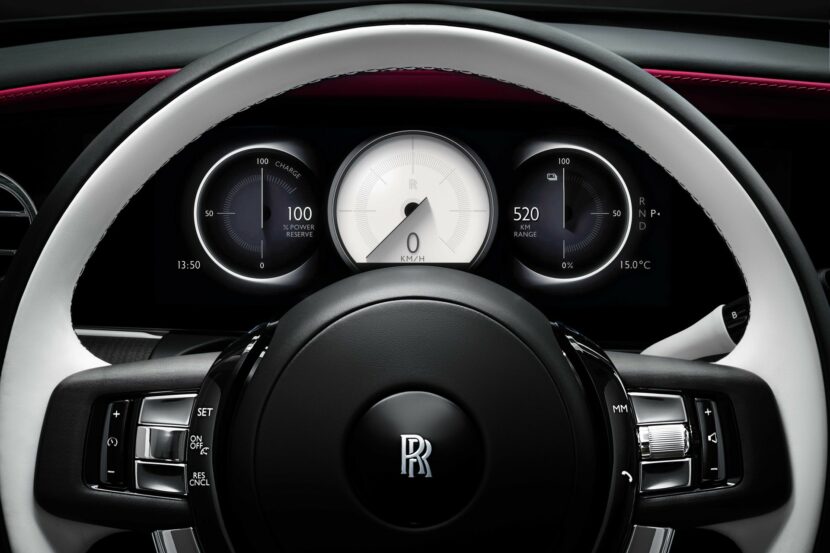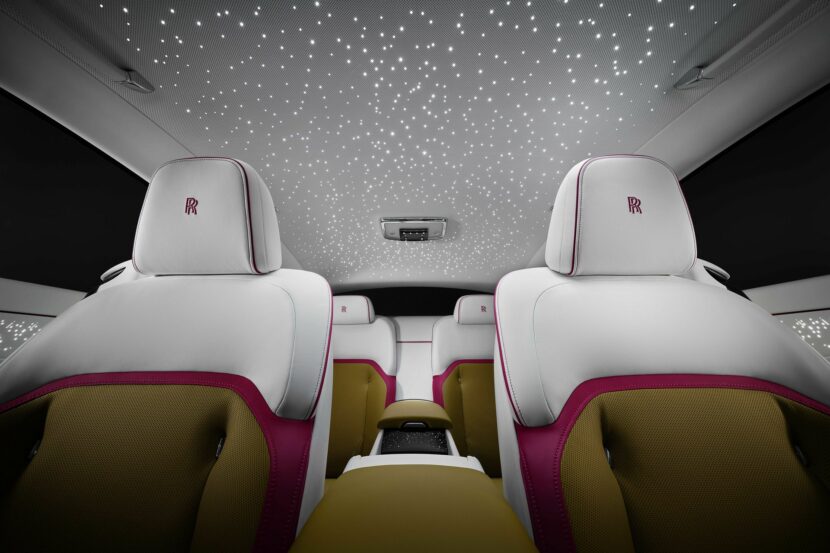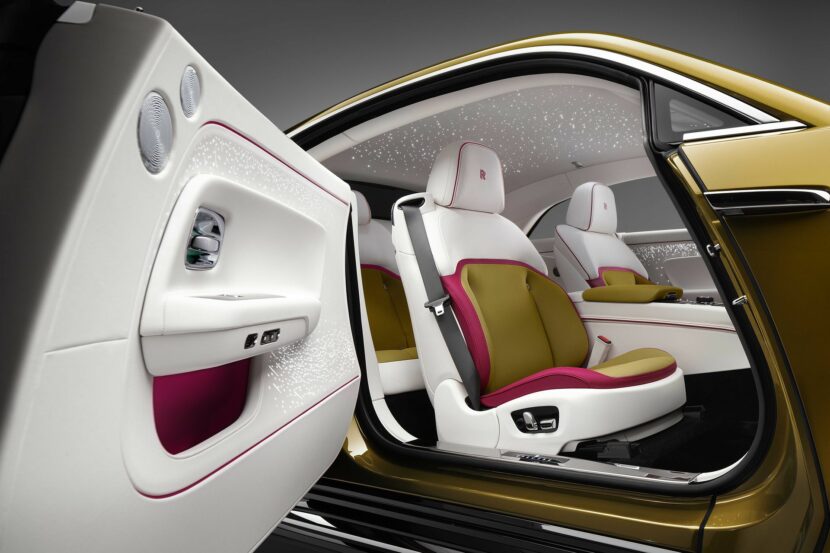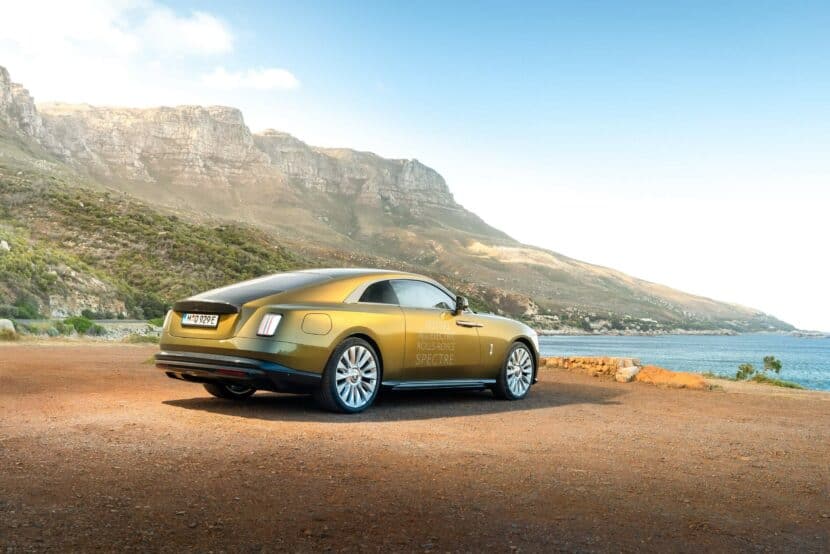At the 2023 Amelia Concours d”Elegance, BMWBLOG got the opportunity to sit down with Anders Warming, Design Director at Rolls-Royce Motor Cars. Focused on the debut of the Rolls-Royce Spectre, we got some interesting insight into the design decisions behind the exciting new Rolls-Royce EV. In case you didn’t know, Rolls-Royce has dubbed the Spectre an “ultra-luxury electric super-coupe” by Rolls and promises at least 260 miles of range, nearly 600 horsepower, and zero to 60 mph in around four and a half seconds. It formally arrives sometime in Q4 of 2023, leading the charge toward a fully-electric RR lineup by 2030. Here are the design highlights.
Designing the Rolls-Royce Spectre
Like most good prototypes, the Spectre began as little more than a sketch. Illustrators concentrated on emphasizing elegance in restraint and smooth, simple surfaces. In fact, every line drawn should adhere to either “wafting lines” or “upstanding gestures,” reflecting as recent as the Phantom VII (one of Anders’ favorite designs) and as timeless as the Silver Cloud. The result should be nothing short of a “monolithic” look, which it more or less achieves. Largely due to the instantly-recognizable all-metal Pantheon grille, a detail that – while not necessarily mechanically integral – Rolls-Royce’s design team decided was too iconic for Rolls to part with in the Spectre’s all-new design.
In fact, according to Mr. Warming, Rolls-Royce is downright “emotionally attached” to its grille. That sharply contrasts with parent group BMW’s approach, which is polarizing at best. And there aren’t many changes in the roadmap. “Spectre sets the tone,” Anders continues. “It is our lighthouse for many things that we are working on.” Rolls-Royce is serious about maintaining its reputation for the bespoke – seemingly uncaring as to what the larger automotive design world is up to.
And why should they? For over a century, they’ve largely sold vehicles that serve the same function and look more or less similar to their predecessors. No customer is marching into a Rolls-Royce showroom, demanding “more luxury” or “modernized looks.” Here’s to keeping well enough alone – a lesson that BMW could’ve perhaps learned half a decade ago.
Design Inside the Rolls-Royce Spectre
But we’ve strayed. The uncompromising exterior design isn’t the only place the new Spectre delivers excellence. Customers can add the famed star headliner to the door cards for a touch of astronomic opulence. In addition, the dashboard has been cleaned up a little bit and streamlined. The goal was to make a dashboard as flat as possible to improve visibility and bring a more cohesive aesthetic to the vehicle.
The digital gauge cluster has been a touchy subject among journalists; at face value, it’s a valid concern. What we didn’t realize was that Rolls-Royce’s demographic skews much younger than anticipated. Younger than BMW and most European brands, in fact. That’s why the Rolls boys have integrated a clean, Apple-like simplicity in their digital gauges. But, impressively, they do it without sacrificing heritage – a “power reserve” gauge is still standard, confusing first-time drivers and, perhaps, bringing knowing smiles to the faces of chauffeurs around the world.
But heritage is more than just lip service to tradition. “In a Rolls Royce, every seat has to be the perfect seat,” Anders states authoritatively. “There cannot be a ‘second row’,” he says, which is why the redesigned rear seats of the Spectre feature uninterrupted surface areas to recline and lounge about as desired. A new focus for Rolls-Royce is sustainable materials – both reactively (for requests) and proactively (for…well, you know, the continued survival of our planet).
Rolls-Royce Spectre Continues Tradition
While we covered a lot here, there’s still a bunch of minutiae that make a Rolls-Royce distinctly, well, Rolls-Royce. But what’s important is that the new Rolls-Royce begins where the last 100 years of tradition left off: making vehicles beyond comparison. One of my favorite details? Anders brought our attention to the tail lights and explained how much less expensive it would be to integrate them into the segment line that separates the trunk from the rest of the rear end. But, following the Rolls-Royce “islands-in-a-lake” design, it wouldn’t make sense. Rolls-Royce prides itself on intentionally setting a detail in a surface so it can be appreciated where it belongs. Plus, the new Rolls-Royce Spectre will endure at least 2.5 million kilometers of testing (equating to roughly 400 years of use) before a car finds its way into customer’s hands. That’s all in pursuit of ensuring this vehicle works 100% of the time for their incredibly important – and notably young – customer base.
Anders says this dedicated effort is partly due to one Charles Rolls quote from back in 1900. “The electric car is perfectly noiseless and clean. There is no smell or vibration, and they should become very useful when fixed charging stations can be arranged.” An admirable endeavor – and one component of the brand ethos that makes Rolls-Royce one of the few automakers that can genuinely say they are remaining true to their brand over 120 years later.

